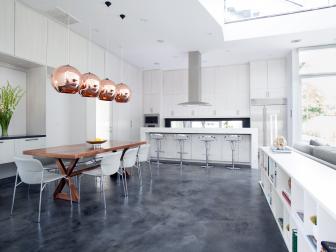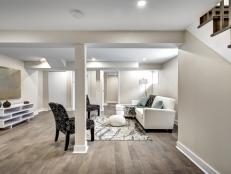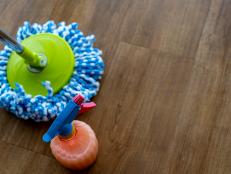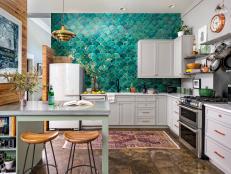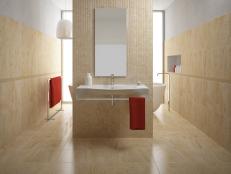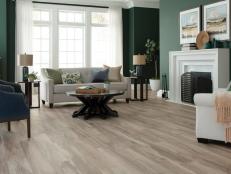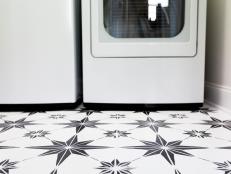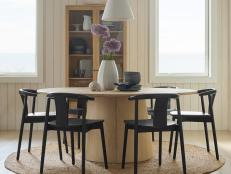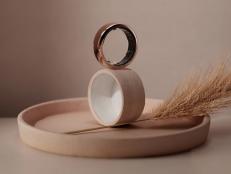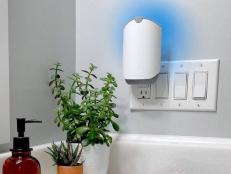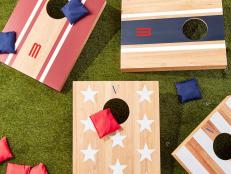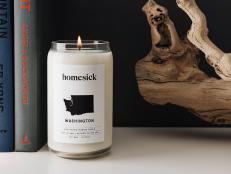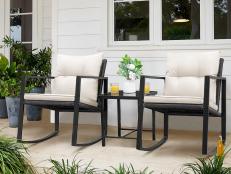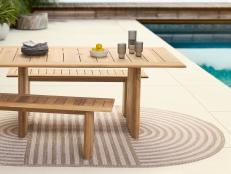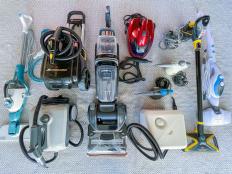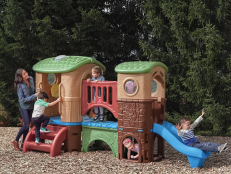The Pros and Cons of Concrete Flooring

Jawitz Properties Ltd., a member of Luxury Portfolio International
Concrete is incredibly hard and strong — no wonder it’s used for streets and driveways! As a flooring material, it has all the strength and durability of a highway. You can’t scratch or dent a concrete floor.
It also can make a fashion statement. Added dyes and etching techniques can turn gray, boring concrete into your home’s star attraction. Cost ranges from downright cheap ($2 per square foot) to relatively pricey ($30 per square foot, depending on finishes).
Obviously, concrete is heavy. If you’re putting in new concrete floors on grade, the weight won’t be a concern. If you’re looking to install concrete over a subfloor supported by joists, you’ll need a structural engineer to determine if your floor can stand the weight. Lightweight concrete may be a solution.
Pros of Concrete Floors
- Low-maintenance: The same properties that make concrete floors so durable also make them easy to care for. Properly sealed concrete floors shrug off dirt, grit, stains, spills, and hard impacts. A little sweeping and damp mopping is all that’s required to keep them looking like new.
- Beautiful design options: Modern techniques for concrete finishing have moved concrete floors from ho-hum to luxurious. Adding dyes as the wet concrete is being mixed produces concrete in a huge range of earthy colors. Surface treatments such as acid stains, concrete stains and paint made for concrete floors can turn plain concrete into beautiful, one-of-a-kind finishes. Also, concrete can be stamped with rubber stencils to give it texture. Combined with the right dyes or coloring agents, finished concrete can be made to mimic ceramic tile, natural stone, brick, even dirt!
- Heated floors: For new construction or for concrete poured over an existing slab, you have the option to add radiant floor heat — electrical cables or hot water tubes embedded in the concrete to create warm, comfy floors.
- Eco-friendly: Concrete does not deplete natural resources, requires less energy than other floor types to produce and is made (poured) locally. Concrete is good for indoor air quality because it inhibits mold, mildew and odors; contains no potentially harmful VOCs and can be finished with zero-VOC sealers. Concrete's absorption of warm and cool air minimizes the need for heating and cooling. And concrete can be recycled and the surface cuts down on the need to discard waste, such as scraps of flooring and underlayment.
Cons of Concrete Floors
- Hardness: There’s no denying that concrete is hard underfoot, a quality that some find uncomfortable. It’s also unforgiving — a dropped glass definitely won’t survive — and it may be a concern if there are small children or elderly folks in the household. Area rugs can help alleviate concerns.
- Moisture: In below-grade basements, moisture migrating up from underneath the slab may make concrete unacceptably damp and damage any surface treatments, such as paint. Proper sealing of the concrete helps, as does mitigation of any outside problem areas like leaky gutters and poor soil drainage.
- Cracking: Like it or not, even expertly installed concrete may develop cracks over time. That’s because the large expanse of a slab has to endure changes in temperature, moisture and settling. Colored cement paste and patching materials help disguise cracks.
Concrete Options
Colors
Choose a range of colors applied to concrete in various methods.
- Integral color is added to concrete during the mixing process.
- Stains produce a translucent finish with a one-of-a-kind look.
- Dyes, often mixed onsite, lend more vibrant shades.
- Colored hardeners are added to fresh concrete for surface-level color.
- Paint can also be applied to the concrete.
Surfaces
Depending on the look and feel you want to achieve, choose from a variety of textures, including troweled, smooth, or polished. Concrete can also be stamped (to create a pattern, such as tiled) or scored (patterned using a circular saw).
Aggregates. Most interior floors are formed from a fine concrete mix, though some incorporate crushed stone or gravel for a rougher surface.
Type of Concrete Floors
There are two general types of concrete floors:
Existing concrete: The concrete slab already in your house can be enhanced with decorative treatments, such as stains and polishes.
Decorative overlay: Concrete overlays can be installed over certain existing hard-surface floor types to mask damage or offer a fresh new appearance.
Factors to Consider
How to Clean. Use gentle cleaners or vinegar to clean. Sweep, mop or vacuum regularly.
How to Clean Concrete Floors
Cleaning outdoor concrete flooring is different from indoor concrete flooring. Here's how to remove dirt and mildew from both surfaces without causing damage.
Best for: Any room, especially kitchens, baths, basements and entryways.
Pet friendly? Extremely. This is the gold standard for pet-proof floors. Concrete withstands scratches from claws, spilled water, and pet messes, and it won't absorb odors. Provide soft mats or pet beds for added comfort.
Underlayment. Concrete floors generally require a level of felt paper, metal lath, and a base layer of concrete.
The Lowdown
Concrete rocks. It's durable, stain-proof, waterproof, and chic, giving your room a sleek contemporary look.
Concrete withstands wear, and it's resistant to fire, stains, water, bacteria and odors. It won't scratch, it's easy to clean, and the design is customizable. Concrete also contributes to good air quality, and it can help reduce energy bills when used properly.
Keep in mind, though, that fragile objects will probably break if dropped on concrete, and standing on it for long periods can be uncomfortable. Hairline cracks can appear over time on concrete floors with heavy traffic. Concrete floors will need to be resealed regularly, and they have been known to produce an echo effect.
Concrete typically costs between $2 and $20 per square foot, installed. Installation is generally best left to professionals.







